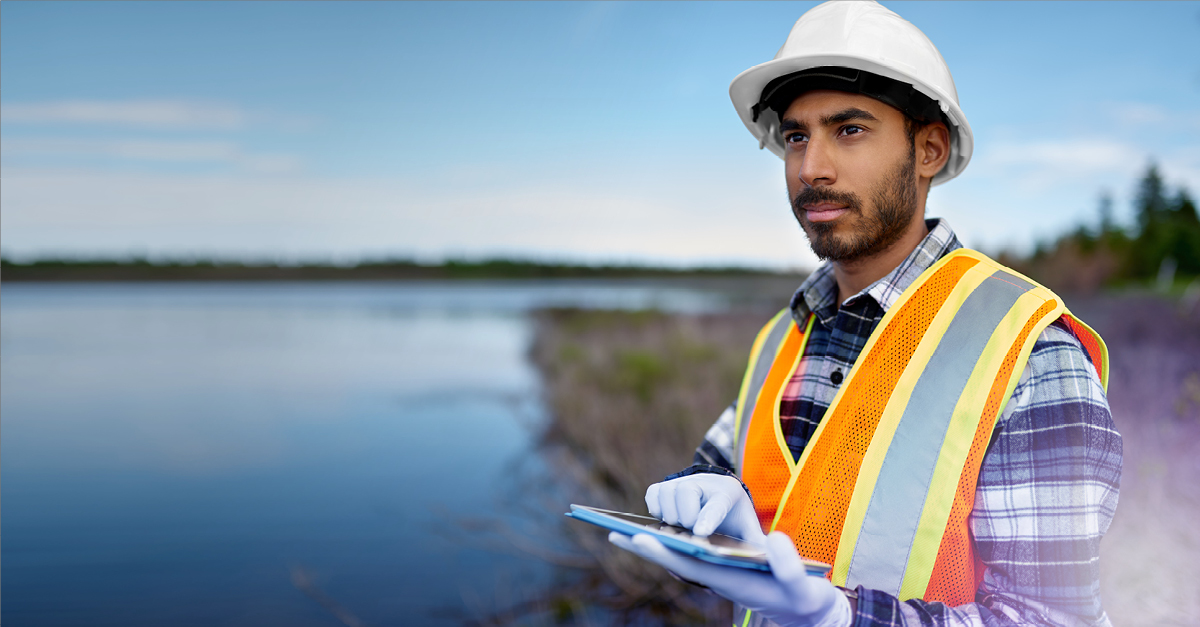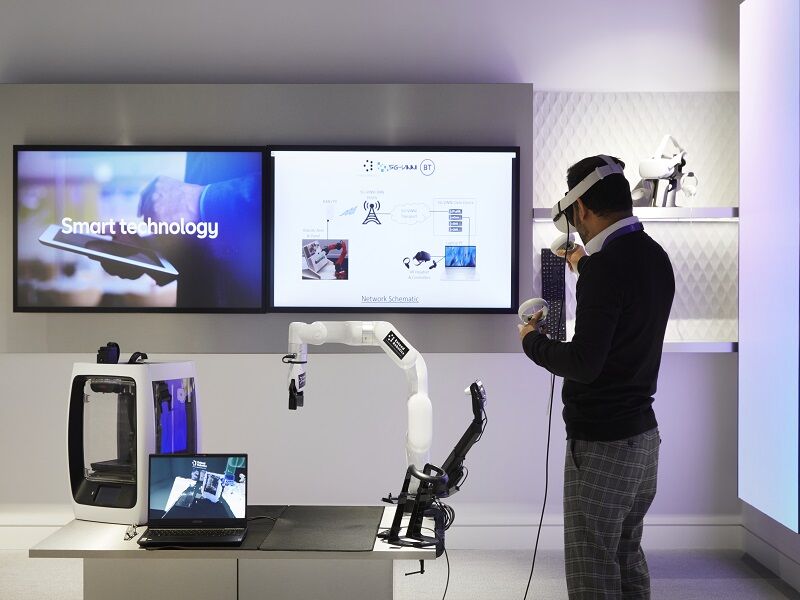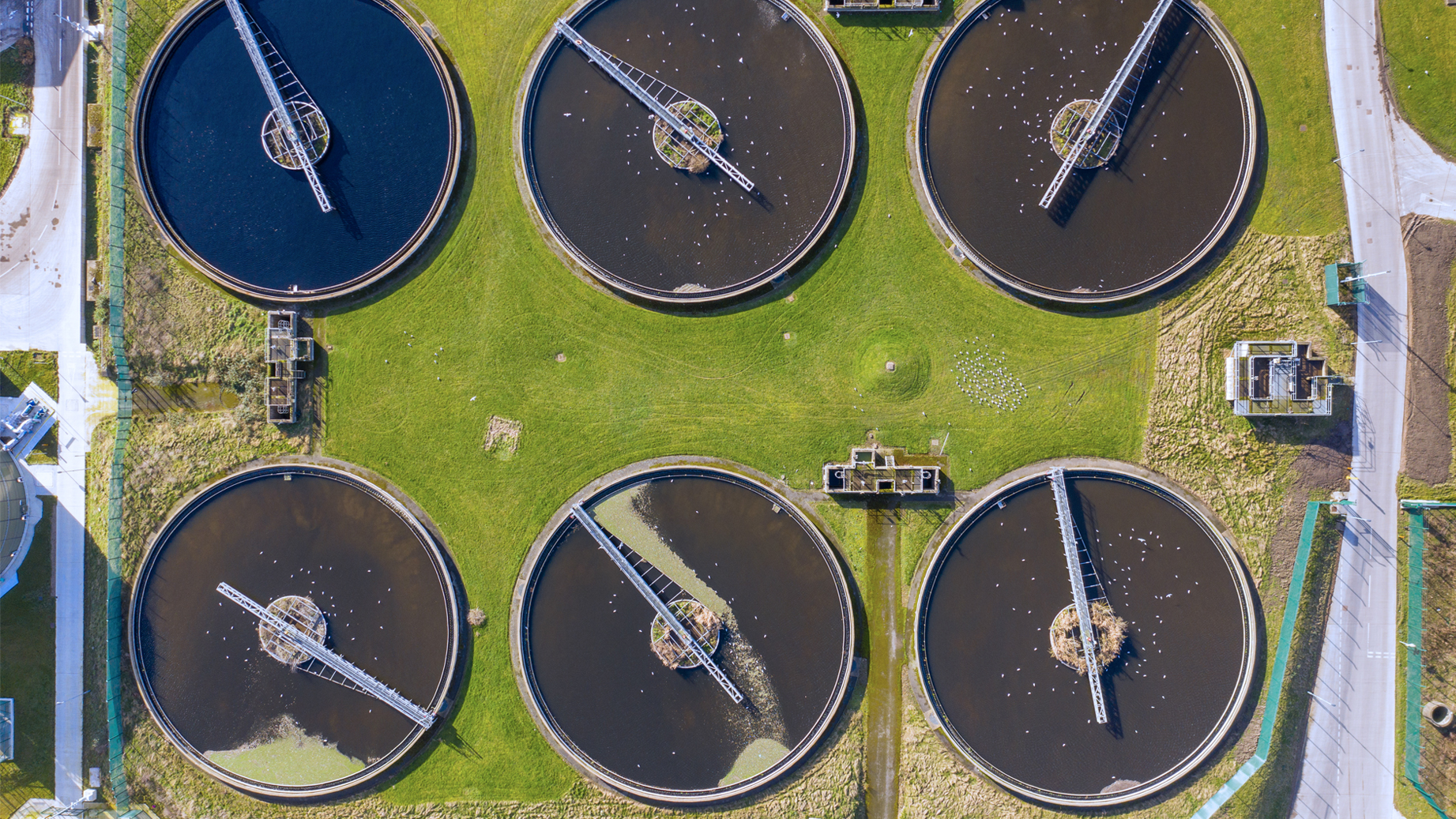Interactive Infographic




On 14 June, we’re bringing your peers, likeminded CIOs and CTOs from leading global businesses together to discuss their challenges, strategies and how to address scalability, sustainability, automation, and security.
We invite you to join the event which will take place at the BT Customer Experience Centre at One Braham, London and discover the opportunity to network, learn from your peers and experience the latest innovative tech. Register here for a free place today.


Transform the water ecosystem into a dynamic digital data network, using the latest IoT technology to enable real-time infrastructure monitoring, which minimises leaks, sewage spills and consumption by quickly spotting and predicting maintenance needs.

Give teams the digital tools they need to communicate and collaborate as effectively as possible, whatever their location, by switching to a fully digital network from the old PSTN and harnessing the best cloud solutions.

Eliminate the heightened cyber threat of digitally transforming the water network, your workforce and customer experience by deploying a zero-trust infrastructure using world-class cybersecurity solutions trusted by military and nation states.

Neque porro quisquam est, qui dolorem ipsum quia dolor sit amet, consectetur, adipisci velit, sed quia non numquam eius modi tempora incidunt ut labore et dolore magnam aliquam quaerat voluptatem.

Ut enim ad minima veniam, quis nostrum exercitationem ullam corporis suscipit laboriosam, nisi ut aliquid ex ea commodi consequatur? Quis autem vel eum iure reprehenderit qui in ea voluptate velit

Neque porro quisquam est, qui dolorem ipsum quia dolor sit amet, consectetur, adipisci velit, sed quia non numquam eius modi tempora incidunt ut labore et dolore magnam aliquam quaerat voluptatem.


"The big challenge facing water companies is how to bring all water data sources together to deliver the visibility and automation necessary to protect supply and the environment"- Rob Holmes, Utilities Lead at BT.
It’s widely acknowledged that deploying smart digital networks across the water ecosystem holds the key to better management of our most precious resource. By enabling flow and infrastructure integrity to be monitored in real time, they will create visibility of both the supply and wastewater sides of the equation. Problems can then be predicted, and incidents detected fast, so they can be dealt with quickly. The resulting leak and pollution reduction will increase our dwindling water supplies, protect the environment, and help meet regulators’ critical targets. And everyone’s happy, including the planet!
But this is no future vision of water. It must happen as quickly as possible. Rising global temperatures will increase water scarcity, with 20% less summer rainfall expected by 2050, according to the UK Environment Agency . Storm events responsible for sewage spills are also likely to increase. Just as pressing is complying with leakage and pollution regulations to avoid crippling government fines. However, the answer only starts with smart network deployment. Success is down to water data and how it’s handled.
Driving innovation
There are currently numerous data points across the water ecosystem, from internal statistics like water quality and pH levels to external data such as population density and three-day weather forecasts from the Met Office. However, a data explosion is on the horizon.
Implementing the right smart digital network in the right way will create a connected water ecosystem. This will significantly increase the amount of data collected internally within a water company by enabling the successful scaling of the current ongoing water innovation trials, such as Sheffield’s leakage reduction project and autonomous sewage capture in Alfreton. In both cases, we are partnering with water companies and other technology leaders to collect data using sensors powered by the Internet of Things (IoT).
In Sheffield acoustic loggers, smart meters and flow monitors are automatically collecting data in real time to predict and detect leaks in the largest IoT project in the water sector covering 60,000 properties across 300 kilometres of network . The trial has reduced visible leaks by 50% and leakage overall by 44%. Meanwhile, water quality sensors and flow monitors in Alfreton are using IoT to trigger sluice gates to prevent sewage spills. Smart digital networks will enable the roll out of these trials and others, extending IoT data collection across a whole catchment to deliver a real-time snapshot of the entire ecosystem.
Opening up
Making the best possible water decisions also requires further external data. This can come from interested parties across the public and private sectors, as well as academia. Our work with The Forth Environmental Resilience Array (Forth-ERA) shows how establishing open data agreements with different organisations can benefit all parties. The research and innovation programme runs in conjunction with the University of Stirling and is aimed at bringing Scotland’s water sector together to drive net zero.
Working with a water company, government environment agency Defra, the Rivers Trust, and a local distillery, for which water is critical to whisky production, we established the first open sharing of water information. Previously, all the organisations involved used different solutions to collect the data separately. We devised a single method of collection across the group, creating more transparency. This enabled all parties to get actionable insight from the data to accelerate the overall Forth-ERA goals, as well as their own. Now, we’re discussing similar initiatives with UK water companies.
Our open data initiative for water has proven timely. In June 2023, Ofwat released a statement calling on all water companies to take immediate action “to unleash the benefits of open data”. This followed a report by the regulator, which found widespread public support for water companies opening their datasets. Ofwat set out “clear and urgent” actions it expects water companies to take. This includes developing a clear roadmap for open data delivery for the industry by October this year.
Working together
External open data can be combined with internal water company data to enable better supply and wastewater management. Take population density, for example. Using EE’s nationwide mobile network, which covers a third of the UK population, it’s possible to pinpoint the more densely populated areas in real time enabling demand to be mapped. Using the information, water companies can balance supply by ensuring resources are delivered where they are most needed.
Working in conjunction with the connected water network, particular attention can be paid to flow and infrastructure monitors in these high demand areas to spot any issues due to the additional stress on the infrastructure. Bringing together both data sets further increases proactivity by highlighting potential flash points. The same could be done for automatic sewage capture systems incorporating Met Office forecasts.
Security first
To achieve this level of actionable insight, water companies are faced with the challenge of collecting, collating and analysing this growing amount of critical data to ensure the right information is extracted, then delivered when and where it’s needed. First, securing and encrypting the data is critical, when stored and in transit. Storage must be handled using an assured platform that delivers fast access along with high resilience.
Stringent, zero-risk data security is vital due to the increasing risk of cyber attacks. New threats are constantly appearing, such as the recent ransomware attack on a UK water company. This makes it essential to have an innovative security partner working alongside you to foresee where the next generation of problems will emerge, such as quantum computing, which we’ve devised a technique called quantum key distribution to secure.
Support system
The relevant data sets must be securely integrated into a water company’s IT infrastructure. Then the appropriate artificial intelligence-driven analytics solutions should be applied to assimilate the data sets as required, extract the necessary insights, and action them automatically across the water network to minimise leaks and spillages. Reducing the need for human intervention in this way also reduces a water company’s carbon footprint.
Bringing all this together successfully demands financially robust technology partners able to provide long-term ongoing support and guidance. Ideally, they should have agnostic, diverse supply chains with strong track records in utilities. This will help to overcome the shortages of essential smart devices, like acoustic loggers and meters, caused by the initial widespread adoption of smart digital networks across the sector.
To truly transform the water ecosystem to optimise supply and minimise pollution, we must build a strong, secure platform to support smart digital networks and process the data that will drive the necessary transparency and automation. Current trials are showing that striking the right technology partnerships holds the key to achieving this successfully.
Keep up with the latest water innovation via our dedicated microsite.
Sed ut perspiciatis unde omnis iste natus error sit voluptatem!
Nemo enim ipsam voluptatem quia voluptas sit odit aut fugit!
Ut enim ad minima veniam, quis nostrum exercitationem ullam!

"Et harum quidem rerum facilis est et expedita distinctio!"

"Nam libero tempore, cum soluta nobis est eligendi."

"Temporibus autem quibusdam et aut officiis debitis!"